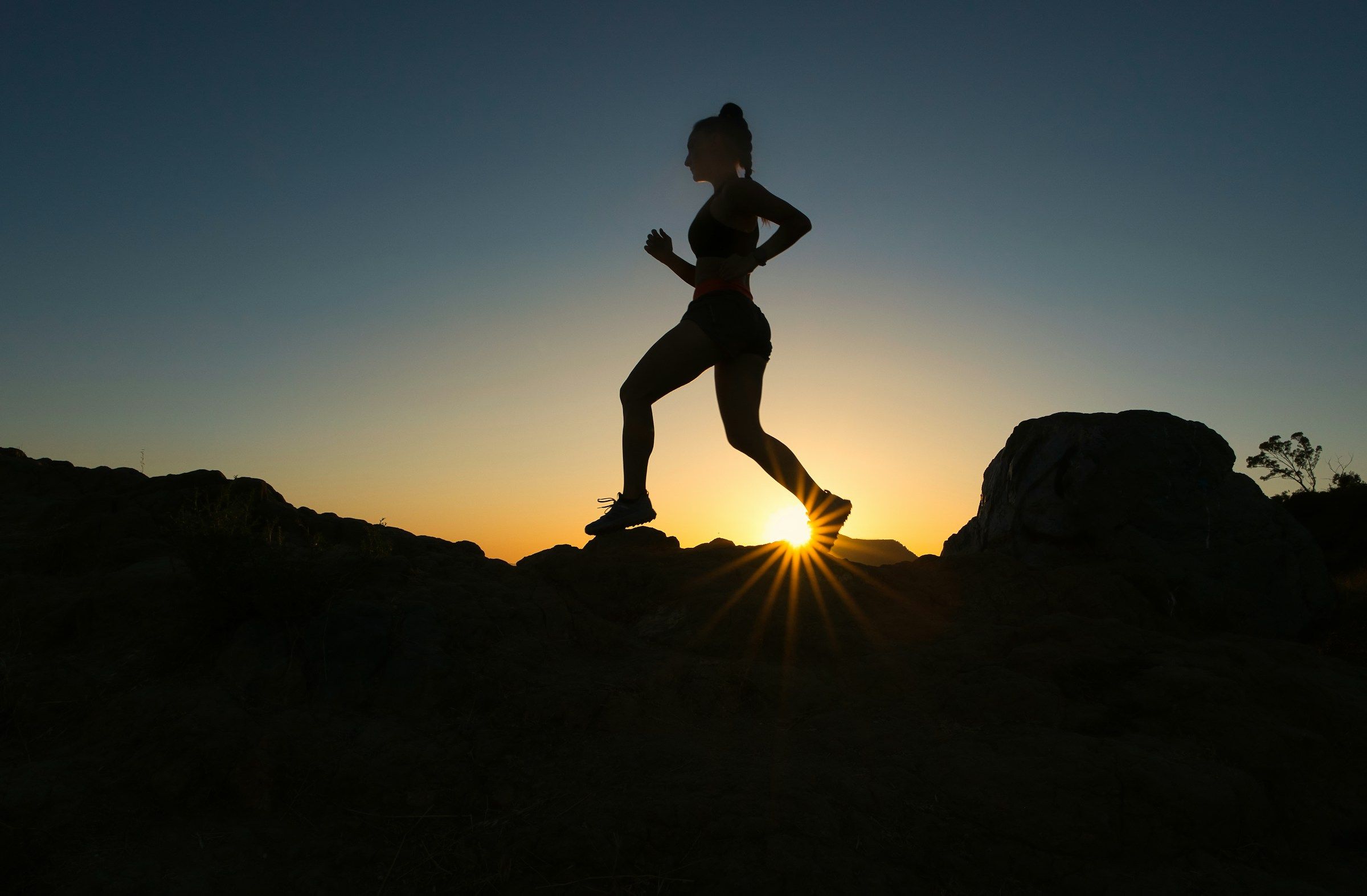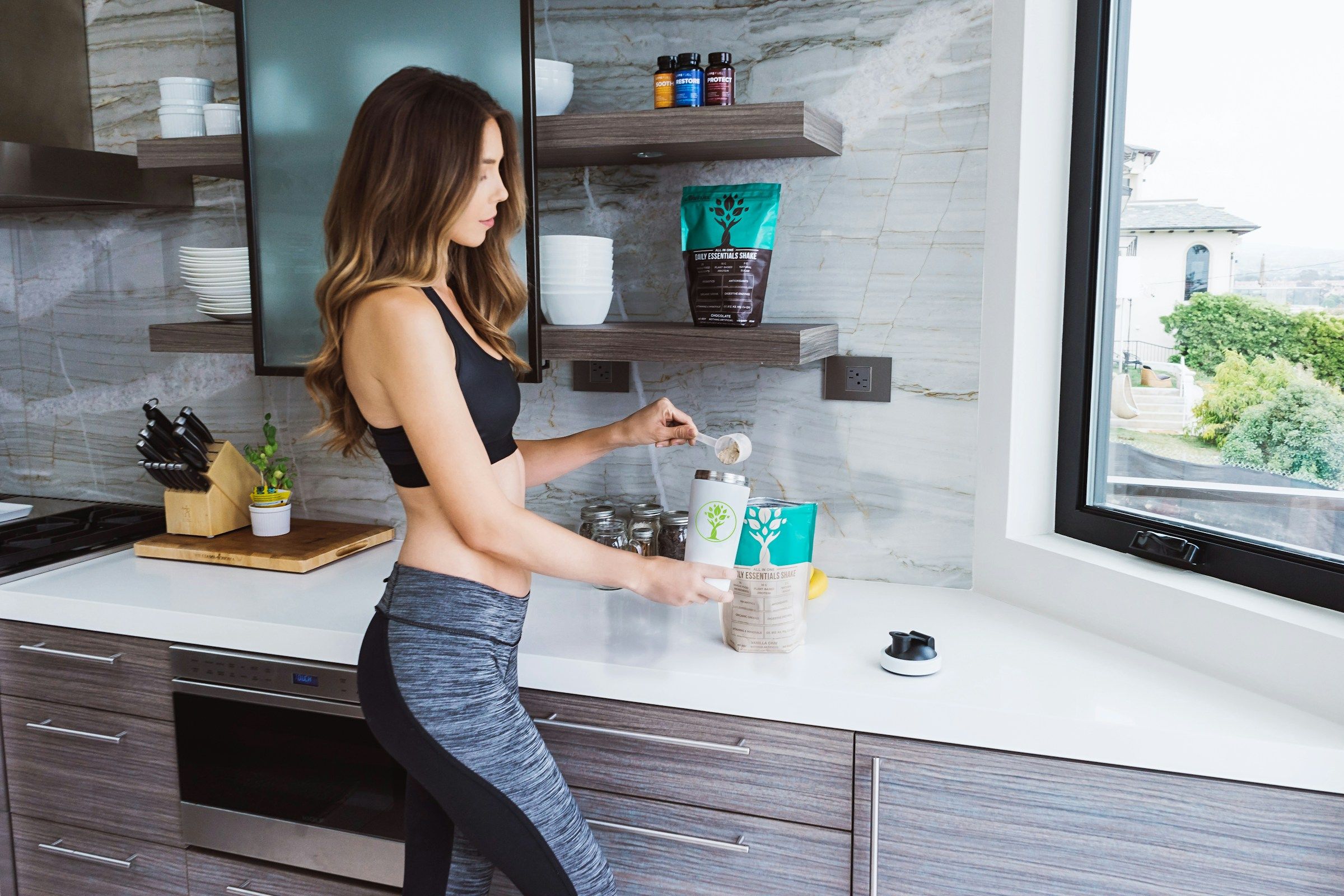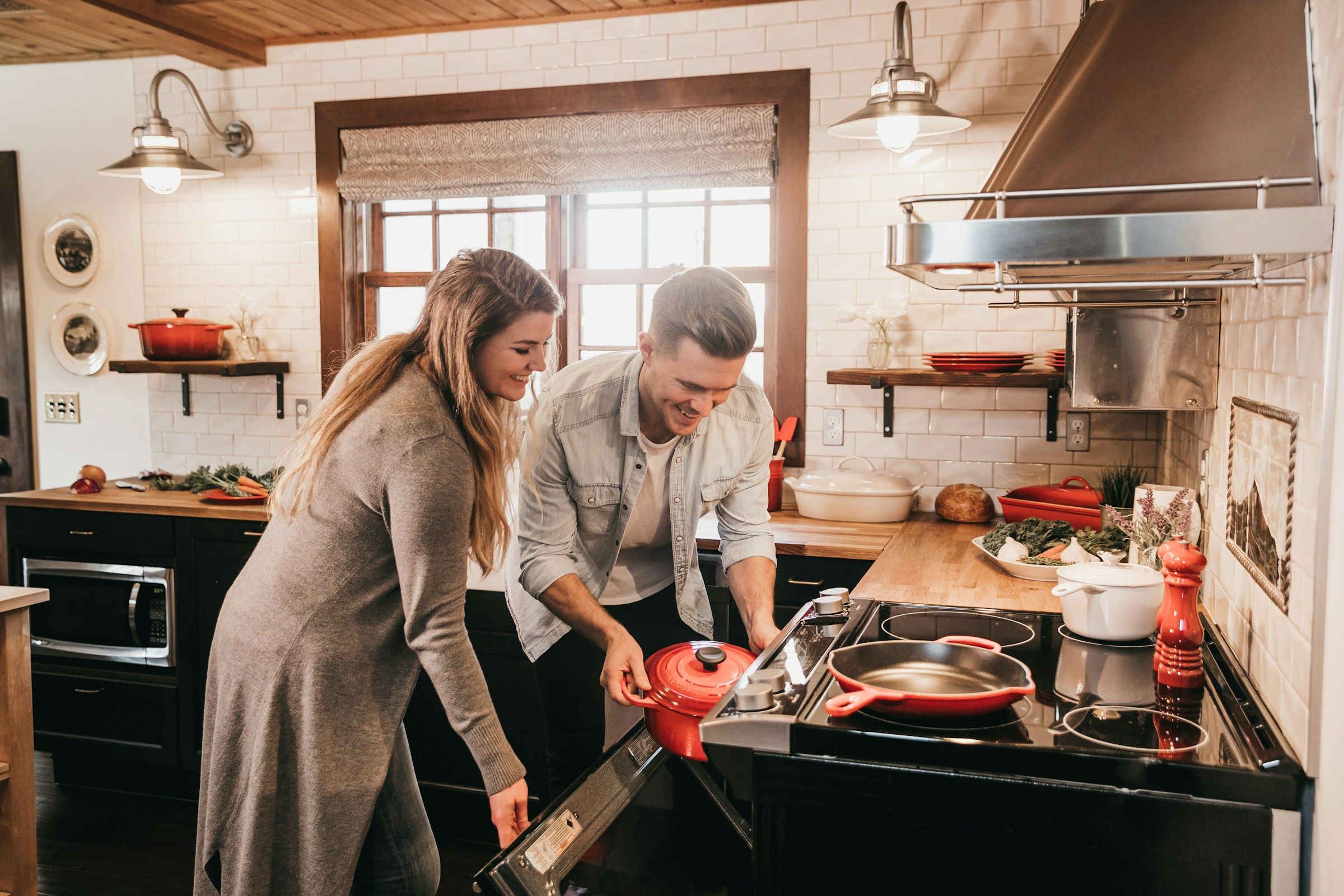Have you ever felt fatigued after a hard workout, only to be puzzled at your low-calorie burn? Regarding calorie tracking, it’s easy to get caught up in the numbers. But the truth is, not all calories are created equal. Your body burns calories in different ways. Balancing active vs. resting calories can help you better manage your energy levels for improved fitness results and overall health. This article will explore the differences between active and resting calories and how to track both to optimize your workout recovery.
A calorie tracker, like the one offered by Goldi AI, can help you easily achieve your calorie-balancing goals. This best app to track macros provides personalized insights that help you better understand the connection between active and resting calories to improve your energy management.
What are Active Calories and How to Track Them

Active calories, also called active energy, refer to the calories burned during physical activities like walking, exercising, or performing daily tasks. They exclude those burned for essential bodily functions like breathing. Active calories are significant for understanding overall calorie expenditure and achieving fitness goals.
How are Active Calories Tracked?
Active calories are tracked using various tools, including:
- Fitness trackers
- Smartphone apps
- Smartwatches
Tracking accuracy depends on individual body metrics (age, weight, and heart rate) and device technology.
Should You Count Active Calories?
Using the calories in/calories out approach to weight loss gives the process structure, which might help some people reach their goals. Tracking active calories can help determine if you are reaching your target weight loss numbers. Experts recommend maintaining a negative calorie balance of 500 to 750 calories per day for weight loss for those with obesity who want to lose weight at a rate of 1 to 2 pounds per week.
Intuitive Eating and Exercise: A Personalized Alternative to Calorie Counting
Weight loss is not always straightforward, and the calories in/calories out principle only sometimes work. For some people, it may trigger unhealthy eating or exercise habits. Research suggests that using fitness monitors and apps to track calories (exercise and food calories) is associated with eating disorders among college students. Instead of counting calories, some experts recommend taking an intuitive approach to diet and exercise.
Intuitive eating simply means listening to your body cues rather than using external messages about what you “should” or “shouldn’t” eat. You can also take an intuitive approach to exercise. Remember, there is no one-size-fits-all approach to weight loss. The best and most sustainable plan for you depends on your needs, your history with food, your preferences, and your long-term goals.
Counting Active Calories
If you count active calories from exercise, you can use an activity calculator to determine how many calories you burn during various activities. You might even use this calculator to select activities that burn more calories to maximize your workout time. While a calculator is helpful, it can only give you a general estimate of your energy expenditure based on your weight, type of workout, and duration of the activity. The accuracy of that number depends on several other factors. Understanding these other factors is important to getting a better overall sense of your energy expenditure throughout the day and staying motivated throughout your weight-loss journey.
Net Calories vs. Gross Calories
Activity calculators generally provide a number reflecting the gross calories burned during your workout. Your gross caloric expenditure is different from your net caloric expenditure. Net calories are sometimes called active calories. During a workout, they refer to the total number of calories burned during your activity minus calories expended for basal metabolic functions. Your basal metabolic rate (BMR)—also called your resting metabolic rate (RMR)—is the energy needed to sustain essential functions such as breathing and circulation.
Net vs. Gross Calories: Understanding the Difference for Accurate Calorie Tracking
Net calories refers to the extra calories burned during physical activity. Gross calories are the total number of calories you burn in a given period, such as during a workout. This includes calories burned from your BMR and the extra energy required for exercise. For example, if you jog when you usually watch TV, you still burn more calories than you would have burned while sitting on the couch.
Still, you’d need to subtract the calories you would’ve burned while watching TV to get a more accurate calculation of how running contributed to your total caloric expenditure. So why does this matter? If you have set a target to burn an extra 300 calories per day to create an energy deficit for weight loss, those calories should be net calories, not gross calories, for them to be genuinely “extra.”
What You Can Do
Some fitness trackers and smartwatches provide numbers for active and total calories burned during a workout. If you have set a goal to burn extra calories for weight loss, use the active number rather than the total number to determine whether you have reached your target.
Exercise Intensity
How hard you work during your workout is vital to the calories you burn during exercise. Not all physical activity calorie estimates take intensity into account. Also, remember that some fitness trackers are better at activity tracking than others, such as Fitbit over Whoop. Some activity calculators allow you to choose between different intensities (such as various running paces). An intensity level cannot be input into an online calculator for most activities. Calorie calculators on exercise machines, such as cardio machines like treadmills and elliptical trainers, use duration and weight (if you input your weight accurately) to determine the number of calories you burn. They generally need to take intensity into account.
Accurately Tracking Calories Burned
Activity trackers with a heart rate monitor are most likely to give you a better estimate of calories burned during your workout because they use heart rate measurements to determine how hard you work. For instance, if you work exceptionally hard during your treadmill workout, your tracker is likelier to consider the higher heart rate and display a higher caloric expenditure.
What You Can Do
Choose a workout intensity that promotes consistency and self-confidence. Exercise at different intensities throughout the week to prevent burnout and injury. Regardless, your hard work will affect the calories you burn. Some activity trackers consider heart rate when determining your total calories burned. For that reason, they are likely to be more accurate than physical activity calorie calculators.
Workout Type
Different types of activities provide various kinds of benefits. If you focus only on caloric expenditure to maximize your energy deficit, you might miss out on the benefits that some workouts can provide. These benefits won’t appear on your fitness tracker or the calorie calculator.
Weight Bearing vs. Non-Weight Bearing
Generally speaking, weight-bearing activities like running, jumping rope, or walking have the potential to burn more calories because gravity requires your body to work harder. In addition, weight-bearing activities also promote better bone health. Non-weight-bearing activities, like cycling or water jogging, may be more comfortable for those with joint issues. Participate in both types of activities to optimize workout results. Do weight-bearing activities a few days per week to optimize bone health. Then, take a day or two to do non-weight-bearing activities to give your body a break.
Aerobic vs. Strength Training
Countless studies have shown that cardio exercise effectively burns calories to lose weight. Research has also demonstrated that strength or resistance training helps to promote weight loss and weight maintenance by helping the body maintain lean muscle mass. But if you’re tracking active calories, you’ll likely see that your weight-training workouts burn fewer calories than your cardio sessions. So, should you avoid them? Probably not. Some studies have compared weight training to cardio for weight loss. Not surprisingly, experts advise combining both types of exercise because both provide essential benefits.
What You Can Do
Choose different types of exercise that you enjoy to make your workout program comfortable and sustainable. Include both aerobic and resistance training in your plan. Aerobic exercise generally burns more calories, while strength training helps you maintain lean muscle mass.
Current Activity Guidelines for Americans suggest getting at least 150 to 300 minutes of moderate-intensity aerobic activity, 75 to 150 minutes of vigorous activity, or a combination of the two weekly. Guidelines also suggest participating in resistance training at least two days weekly.
Mechanical Efficiency
Your ability to perform exercises properly—your mechanical efficiency—can impact the number of calories you burn during a workout. It seems strange that being good at an activity would mean burning fewer calories. But that’s precisely what can happen when you exercise consistently. When you first learn a new form of exercise, there is usually a learning curve. Your first attempts may require more effort because your body isn’t used to the activity—which can result in a higher heart rate and caloric expenditure.
How Exercise Efficiency Affects Calorie Burn and Tracking Accuracy
Over time, movements usually become more natural and efficient. Your body can perform the exercise with less effort and fewer calories. But you can keep your calorie expenditure from falling by working harder. For instance, when you learn to swim, you may burn many calories because you splash and kick to keep your body buoyant.
But as you become more efficient and streamlined, your body moves through the water with less effort (and fewer calories). None of these changes are reflected in the calorie result shown on a physical activity calculator. If your fitness tracker considers heart rate, you may see changes.
What You Can Do
Your body’s ability to move through exercises quickly is called “mechanical efficiency,” which is good. It allows you to move through activities with less effort and a lower heart rate. Mechanical efficiency can also affect (decrease) the number of calories you burn during a workout, which is not considered when using an activity calculator. To burn more calories for weight loss, increase your workload as you become more proficient with different activities. A heart rate monitor or fitness tracker can better estimate active versus total calories burned.
Exercise Compensation
Sometimes, exercising for weight loss yields different results even though you complete workouts that align with your calorie targets. So what’s the problem? Exercise compensation may be to blame. Your exercise program can affect your activity level for the rest of the day. For instance, if you do a tough workout and then take a nap or skip an afternoon walk, you may burn fewer total daily calories. Exercise can also increase your appetite, causing you to eat more calories. Researchers call this phenomenon exercise compensation.
What You Can Do
If you are counting exercise calories to lose weight, track your total daily caloric expenditure (TDEE) rather than just the calories burned during your workout. You may adjust your activity level and food intake, which negates calories burned from exercise. If this is the case, reconsider the intensity of your workout. You may be working too hard too often. It may also signal that your energy intake is too low. Work with a registered dietitian to ensure you get enough calories to fuel your activity level.
Genetics and Gender
Our genetic makeup helps to determine resting metabolic rate, muscle fiber types, and responses to exercise, all of which can affect our ability to burn calories and lose weight. Unfortunately, no activity tracker or physical activity calorie calculator can take genetics into account. Gender can also affect the number of calories you burn. Women usually have more body fat than men, and their bodies respond differently to exercise, which can change the rate of fat loss. Some activity calculators and most trackers take gender into account, but they can not consider your genetic makeup. Another reason to take the numbers you get with a grain of salt when tracking exercise calories.
Active vs Resting Calories Expenditure
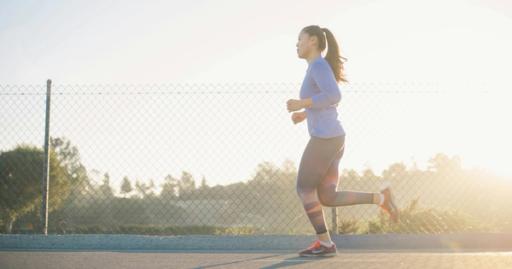
Calories provide the energy that powers every bodily process. For optimal fitness and well-being, it’s vital to distinguish between the two main types of calorie expenditure: active and resting.
Active Calories: Energy Expended Through Movement
Active calories are burned during any form of physical activity. This encompasses structured workouts, everyday tasks like gardening or walking, and even subconscious movements like fidgeting. The intensity and duration of your activity directly influence the number of active calories you burn.
Resting Calories: Your Body’s Internal Energy Needs
Resting Metabolic Rate (RMR), or Basal Metabolic Rate (BMR), represents the energy your body requires to sustain its essential functions at rest. This includes:
- Respiration
- Circulation
- Digestion
- Cell repair
- Maintaining body temperature
Surprisingly, your RMR accounts for roughly 60-75% of your total daily calorie burn.
Why Understanding the Difference is Crucial
- Effective Weight Management: Grasping the interplay between active and resting calories provides a holistic understanding of your energy balance. This empowers you to set achievable and sustainable:
- Weight loss
- Gain
- Maintenance goals
- Personalized Fitness Plans: Knowledge of your RMR allows for creating workout regimens that align perfectly with your body’s unique requirements, maximizing efficiency and results.
- Debunking Misconceptions: Questions like “Does standing burn more calories than sitting?” can be answered definitively. Even minor differences in activity levels impact overall energy expenditure.
Factors Influencing Your Resting Metabolic Rate
Your Resting Metabolic Rate (RMR) is the energy your body uses to keep you alive at rest. Several factors influence it:
- Age: Metabolism naturally slows as you get older due to changes in body composition and hormonal shifts. While some slowdown is inevitable, maintaining good fitness levels mitigates the decline.
- Body Composition: Muscle burns more calories at rest than fat. Building muscle mass is a powerful way to boost your RMR and support your overall health.
- Gender: Men generally have a higher RMR than women, often due to differences in body composition. This means personalized approaches to fitness and weight management are usually more effective.
- Genetics: Your genes play a role in your metabolic rate.
While you can’t change your DNA, focusing on factors you can control, like body composition, makes a huge difference. Other elements that can subtly influence your RMR include:
- Hormonal conditions (such as thyroid disorders)
- Extreme temperatures
- Certain medications
How to Calculate Resting Calories
Many online RMR calculators can be used to calculate your resting metabolism. They then multiply by an activity factor to account for your physical activity and tell you approximately how many calories your body needs. You can also calculate resting calories in a lab, a gym, or by doing the math yourself. Remember that these calculators and tests estimate the resting calories burned daily and don’t provide an exact figure.
How to Measure and Calculate Resting Metabolic Rate (RMR) for Accurate Energy Estimates
After calculating your resting metabolic rate, you might wonder if it falls within the normal range. The average RMR is estimated at approximately 1,400 kcal per day for females and 1,600 kcal per day for males. It is considered normal if your RMR falls above or below these values.
RMR Calculator
This is the simplest, most convenient way to calculate your resting calories. Search online for a Resting Metabolic Rate Calculator. Then, input your age, sex, height, and weight. You need to know these before you use an online resting calories burned calculator. Some also ask how active you are physically to give a more accurate estimate of total energy needs.
Calculate RMR in a Laboratory
Some clinics and health clubs may conduct tests to provide you with your RMR. Such a test takes approximately an hour. It may involve exercise testing. Most protocols require you to wear a mask for a certain period (approximately 15 minutes) while resting. This mask measures the exchange of gases to determine the number of resting calories burned. If you do exercise testing, you must wear a mask while on a treadmill. This measures the number of calories your body burns while working.
Calculate RMR Yourself
If you’re a math lover, you could calculate RMR yourself. A formula called the Harris-Benedict Equation is used to estimate resting metabolic rate. You may see different versions of the equation, depending on whether they use the original or revised versions.
Revised Harris-Benedict Equation:
*Men’s RMR = 88.362 + (13.397 x weight in kg) + (4.799 x height in cm)—(5.677 x age in years).
Women’s RMR = 444.7.593 + (9.247 x weight in kg) + (3.098 x height in cm)—(4.330 x age in years).
*For example, the RMR of a 25-year-old male who weighs 70 kg and is 170 cm tall needs approximately 1,700 Kcal per day at rest.
How Do Resting Calories Affect Your Workout?
Exercising regularly increases the number of calories burned. It also increases your resting energy expenditure—the rate at which your body burns energy once the workout is complete and you’re sleeping. Your resting metabolic rate may remain elevated if you exercise at least three times a week.
In the long term, RMR increases due to increased lean body muscle. Moderate-intensity cardiovascular activities such as jogging, running, cycling, or hiking may help increase metabolic rate by increasing oxygen consumption and efficiency.
Combining Cardio and Strength Training to Boost Metabolic Rate
Strength training helps build muscle mass over time, which requires more energy to maintain. Combine moderate to high-intensity cardio and strength training exercises to increase your metabolic rate. These include:
- Rope jumping
- Weight lifting
- Plyometric exercises
- Hillwalking
Do Resting Calories Count Toward Weight Loss?
Weight gain results from consuming extra calories (more calories than the body requires). The average female needs 2,200 kcal, while the average male requires 2,700 kcal daily to function correctly and maintain weight. Any extra calories are stored as fat and may eventually cause weight gain.
If one individual reduces calorie intake and another increases physical exercise and doesn’t cut back on calories, the first individual will probably find it easier to lose weight. This is because burning 500 calories is more challenging than cutting 500 calories from your daily meals. When the body burns fewer calories, you either lose weight slower or don’t lose weight at all.
Achieving a Healthy Calorie Deficit: Balancing Diet and Exercise for Sustainable Weight Loss
The solution is to balance modest calorie restriction and increase your physical activity to maintain your metabolic rate as much as possible. Regular exercise increases the calories burned and the energy expenditure during rest. Regular exercises also temporarily increase your appetite. People often joke about wanting a snack after exercise. Try eating slightly less than your total calorie needs to lose weight.
You can also increase your level of physical activity to create an energy deficit. Some experts call this a calorie deficit. When you take in fewer calories than your body needs, it burns up stored fat as fuel. The result is that you lose weight. Restricting calories too much can backfire, so you should aim for a 500-calorie daily deficit (or the difference between what you burn and what you take in through eating).
Ways to Burn More Calories Every Day
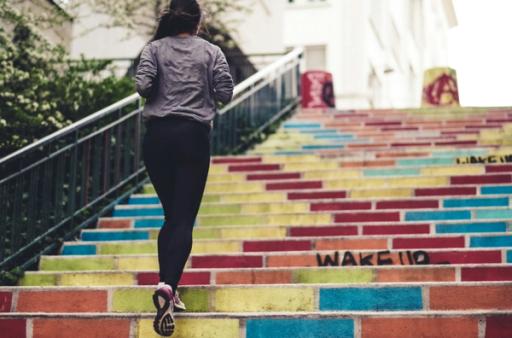
Increase Your Active Calories By Standing More
Standing burns more calories than sitting. The muscles in your back and legs do extra work when you stand. To burn even more calories, pace back and forth while you talk on the phone. If you have a desk job, see if you can get a standing desk or rig one up and spend part of the day standing while you work.
Break Up Extended Periods of Sitting
Take regular breaks. People who often take breaks from sitting burn more calories than those who sit in one place for hours. Just getting up for a quick stretch will break up your sitting time.
Walk More
Look for ways to add more walking to your life. Walk to the bathroom on the other end of the building—Park at the far end of the parking lot. Get off the bus or subway several stops ahead and walk the rest.
Increase Your Balance and Stability
Stand on one foot. While standing, lift one foot an inch off the ground, see how long you can hold that position, and then change feet. This exercise will work your leg and core muscles and improve your balance.
Get in a Hurry
Be in a hurry. Walking fast burns more calories than a stroll. Make a game by seeing how quickly you can reach your destination.
Take the Stairs
Stair climbing is one of the easiest ways to burn calories without going to a gym. If you have to get to the 11th floor, walk up as many flights as possible, then take the elevator the rest of the way.
Plan Active Parties
Plan active parties. If you have guests over for a BBQ or dinner party, start the evening with a:
- Game of volleyball
- Badminton
- An active video game
Make social events active by meeting to go bowling, throw darts, or play pool.
Track Your Progress
Wear a tracking device. Wearable activity monitors or smartphone apps can tell you how active you have been on a given day. You might set a daily goal for yourself or get a friend to join you in a friendly competition. Seeing how adding extra activities improves your daily results can inspire you to do even more.
Add Music to Your Workouts
Listen to music while you walk. It can make the activity more fun and distract you from what you are doing. Pick an upbeat tune, and you may increase the intensity of your walk without realizing it.
Watch Less TV
Television remains one of the biggest draws for sitting marathons. If you are hooked on a certain show, tune in and hit the off button as soon as the show ends. You could also try standing up while you watch or doing pushups, crunches, or squats every time a commercial comes on. Only allowing yourself to watch your favorite show at the gym can help motivate you to get in your workouts.
Do Your Shopping in Person
When you physically go to a store to shop, you:
- Walk to the building
- Take the stairs
- Walk the aisles
- Reach for things
- Lift and carry bags
Compare that to the tiny movements involved in online shopping.
Do It Yourself
But balancing the calories you eat with the energy you use becomes harder as things get easier. These are all tremendous time-saving inventions:
- Prepackaged foods
- Snow blowers
- Riding mowers
- Other conveniences
These activities will make you move:
- Cooking from scratch
- Cutting the grass with a push mower
- Shoveling the walk
And the more you move, the more you burn, and the healthier you will be.
Track Your Calories within Less Than 15 Seconds with Our Calorie Tracker App
Goldi AI transforms calorie tracking with our cutting-edge AI technology. Just snap a photo of your meal, and we’ll do the rest. Our app combines your phone’s depth sensor with advanced AI models to:
- Analyze food volume
- Identify ingredients
- Instantly calculate calories, protein, carbs, and fat content
With 90% accuracy on visible foods and multiple tracking options, we’ve made nutrition tracking effortless. Options include:
- Barcode scanning
- Food label recognition
- Manual description for complex items like smoothies
Gone are the days of tedious manual logging calorie-tracking apps. Whether scanning a full meal or a quick snack, Goldi AI gives you accurate nutritional information in under 15 seconds. Plus, our AI learns from your feedback, continuously improving its accuracy.
Stay on track with personalized insights and brilliant reminders. Goldi AI makes achieving your fitness goals simpler than ever. Track your calories with your camera using Goldi AI’s calorie tracker today.
